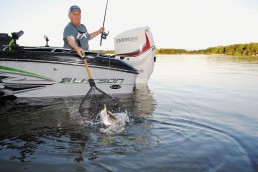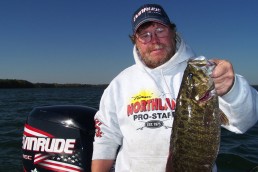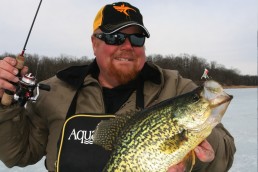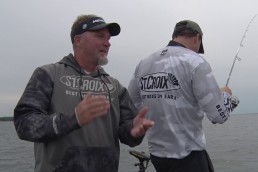Catch Them on Crankbaits
SHARE THIS POST
Recently we talked about selecting the appropriate jig when you want to catch walleyes. Crankbaits are another tool that will catch a wide variety of fish in many conditions. However, there’s more to it than just tying on a crankbait and casting or trolling it. Here are some things to keep in mind when you go to the tackle shop to stock a box with crankbaits.
There are so many variables when selecting a crankbait, and that’s part of the fun. Lure shape, size, color, running depth and action are all part of the consideration. For starters, consider the shape of the fish that you want to catch. Walleyes, northern pike, and muskies are longer, thinner fish, and they feed mostly on longer, thinner baitfish. They eat lots of perch and suckers and smelt—long, thin baitfish. Much of the time a longer, thinner crankbait will be better for the walleyes.
Now look at a largemouth bass: They’re shorter and more rotund. They like to eat bluegills and shad, which are shorter and fatter baitfish. Much of the time a shorter, fatter crankbait will be better for largemouth bass.
This doesn’t mean that short, fat crankbaits won’t catch walleyes, because they will. And longer, thinner crankbaits will catch largemouth bass. What we want to do is put the odds in our favor. Usually, though, the longer, thinner baits will be better for longer, thinner fish. The shorter, fatter crankbaits will usually be better for shorter, fatter fish.
Now let’s consider crankbait color. There are so many colors and many will work from time to time. Many walleye catchers like FireTiger, perch, black back/silver, purple back/silver or blue/back silver. You need chartreuse and there are times when orange back/silver are outstanding. Most of the time one of those color patterns will work for walleyes.
Largemouths like bluegill- and crawfish-colored baits, and they also like blue/chartreuse and shad colors. For bass, I like brighter baits for stained water and more natural colors for clear.
Are you enjoying this post?
You can be among the first to get the latest info on where to go, what to use and how to use it!
For running depth, sometimes you want your bait banging the bottom, other times you want it to run above the bottom at a certain level. In stained or dirty water, the fish will often be right on the bottom, and their vision is limited due to the water’s color. In this situation, a bait that’s banging the bottom and making noise will take more fish because they can find it easier.
In clear water, fish can see better so they’ll move farther to take a bait. This is when it’s important to keep the bait a bit above the level where you think the fish are holding. Fish can see up better than they can down, so it’s better to keep your bait above them.
When it comes to size, the more active the fish are, the bigger the bait should be. You’ll usually catch bigger fish on bigger baits.
I’ve been using lots of Salmo Hornets the past few years. Hornets are kind of a hybrid bait. They’re not long and thin like many walleye baits, but they sure do catch walleyes. And they’re not short and fat baits like many largemouth baits, but the new 6.5 Hornet is a largemouth-catcher. I don’t know why the Hornet is so versatile, but it is. I do know that you if you’ll use crankbaits more in the right situations, you’ll increase your odds of catching more and bigger fish.
MWO
SHARE THIS POST
Did you enjoy this post?
You can be among the first to get the latest info on where to go, what to use and how to use it!
Bob Jensen
To see the latest episodes of “Fishing the Midwest” television, new fishing-related tips and articles from the past, visit fishingthemidwest.com. Follow them on Facebook @fishingthemidwest for fishing information and entertainment.



